As truck enthusiasts, we sometimes do things which don’t make a lot of sense, like using a 20-year-old, 250,000-mile diesel as a daily driver, or spending thousands of dollars to make an eight-thousand-pound pickup truck fast as a stock muscle car. If we thought in more sensible terms, a Prius might be a better choice for a daily driver, or if we wanted to go fast, a lightweight 1,300cc motorcycle would be the easiest way to accelerate in a hurry. But we don’t usually let logic steer the ship: for a truck enthusiast its more about emotion. We might love driving that old truck because our grandpa had one when we were younger, and we remember riding shotgun on Saturday morning to get breakfast with the guys. Or, perhaps the reason a diesel race truck is so appealing, is that feeling you get when you do a boosted 4×4 launch and put bus lengths on a Mustang pulling away from the line, leaving the driver with a look of bewilderment.
Regardless of how excited you were on the day you first bought your old truck, once you own it for a few years, it inevitably will lose its appeal, and your eyes start to wander as you consider buying a newer truck with less miles and fewer problems. Rather than throwing down big bucks for a brand-ne
w truck, there are a few things you can do to the old battle axe to restore that excitement and love affair you had with your old truck when you first got it. While it can be very easy to go overboard and just do a full restoration, that would be very painful on the wallet, and take a ton of time. Instead, there are a few key areas where you can strategically spend a few bucks, and the improvements will be so noticeable you’ll fall in love with your truck all over again.
Step One: Clean it Up
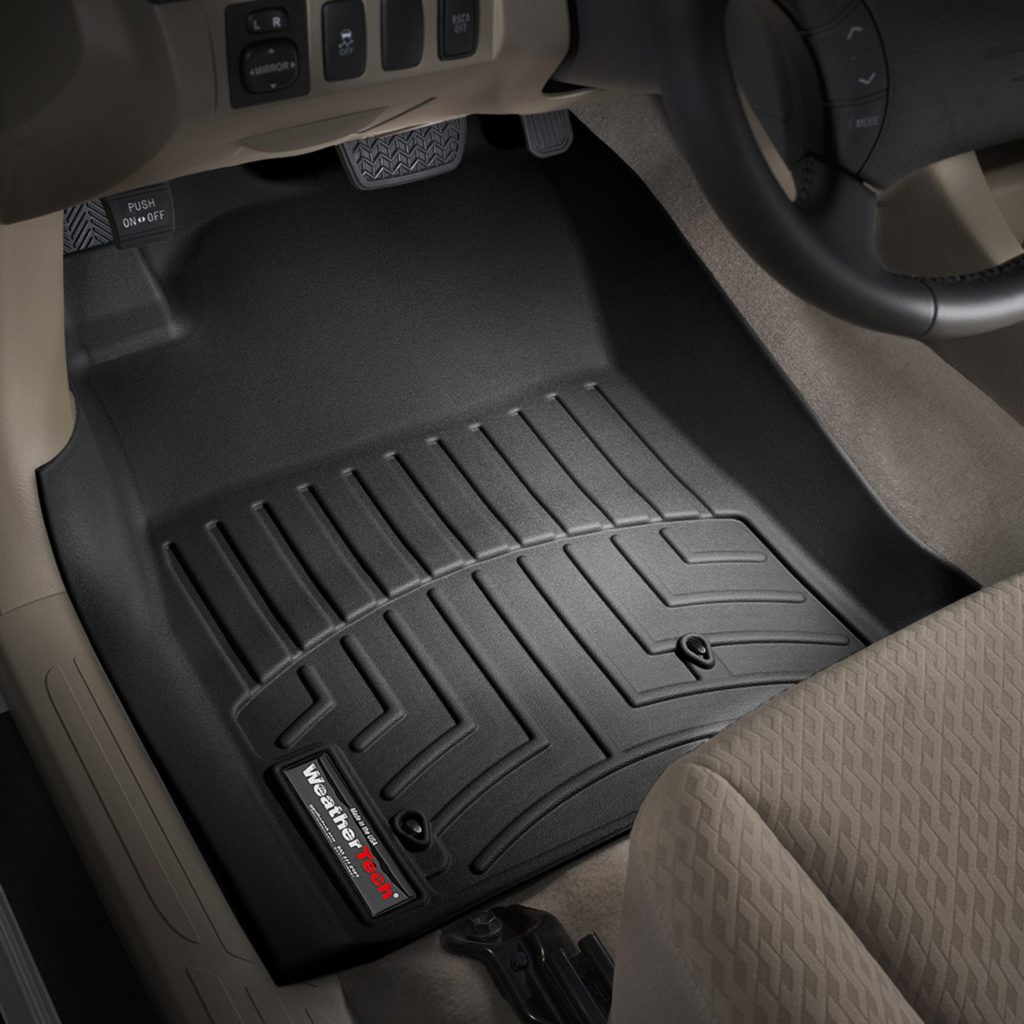
While it certainly is a no-brainer, the first step to rekindling the relationship with your old truck often costs little to no money at all, and just involves a thorough cleaning. First, get rid of all the extra trash inside, and throw away the un-used junk in the bed. Next, grab the vacuum cleaner, garden hose, bucket and soap, and get to scrubbing. Even though the bodywork might have a few dings and dents, your old truck will certainly look better when cleaned up, and when it looks better, you’ll feel better about keeping it around. If you really want to get crazy, you can jack up the truck and pressure wash the frame to remove any grease and grime and hit the frame with a fresh coat of chassis black paint for an aerosol overhaul.
When cleaning, pay special attention to the interior, because that’s where you spend most of your time. Rent a rug doctor or even have a professional detailer come by to help out with some high-octane cleaning equipment. While it might not seem like a big deal, removing those coffee stains and grime from your carpets and seats will give a huge bump to your enjoyment factor. To keep the floor from getting dirty all over again, a set of WeatherTech Floor Liners will drop right in and catch any mud or dirt before it gets into the carpet.
Finally, replace or repair any cracked interior panels, especially if they’re in your line of sight. A perfect example would be the 2nd gen Ram: the factory dashboards are notorious for cracking, and a gaping hole in the center of the dash is a huge turn off. A simple fix is to throw on an Accutrim dash cap, which will easily cover the hole and transform the looks of your interior without the need to completely disassemble the interior for a full dashboard replacement. A few dollars wisely spent on the interior will have the biggest effect on how much you enjoy your old truck, and your significant other will be much more likely to ride along once the interior makeover is complete.
Step Two: Maintenance is Key
The occasional detail helps keep the interior of the truck looking great, but it’s just as important to keep things clean and well lubricated on the inside of the engine and transmission, with simple routine maintenance like fluids and filter changes. While it may not make a huge difference in the way your truck looks, a properly maintained powertrain will last longer and give you more confidence behind the wheel. For a higher mileage truck, I prefer to change the engine oil every 5,000 miles. This may be a bit sooner than the manufacturer’s recommended interval, but it ensures minimal sludge build up and helps you spot any potential problems like fuel diluted oil sooner, rather than later.
Fuel filters should be changed every 10,000 miles if you’re running a stock style filter, or if you run a lift pump with external filters like a FASS system, the service can be stretched out to every 20k miles due to the increased filtration capacity. An automatic trans should get new fluid and filters regularly, especially if used in extreme conditions like towing or plowing snow. Each type of transmission has its own recommended service interval, but the typical range is between 30 and 60,000 miles. Don’t forget about the transfer case and differentials as well, and if you’re unsure of how often the fluids should be changed, grab a service manual for your truck or do a web search. Also, don’t be afraid of changing the oil sooner if you can’t remember the last time an item was serviced.
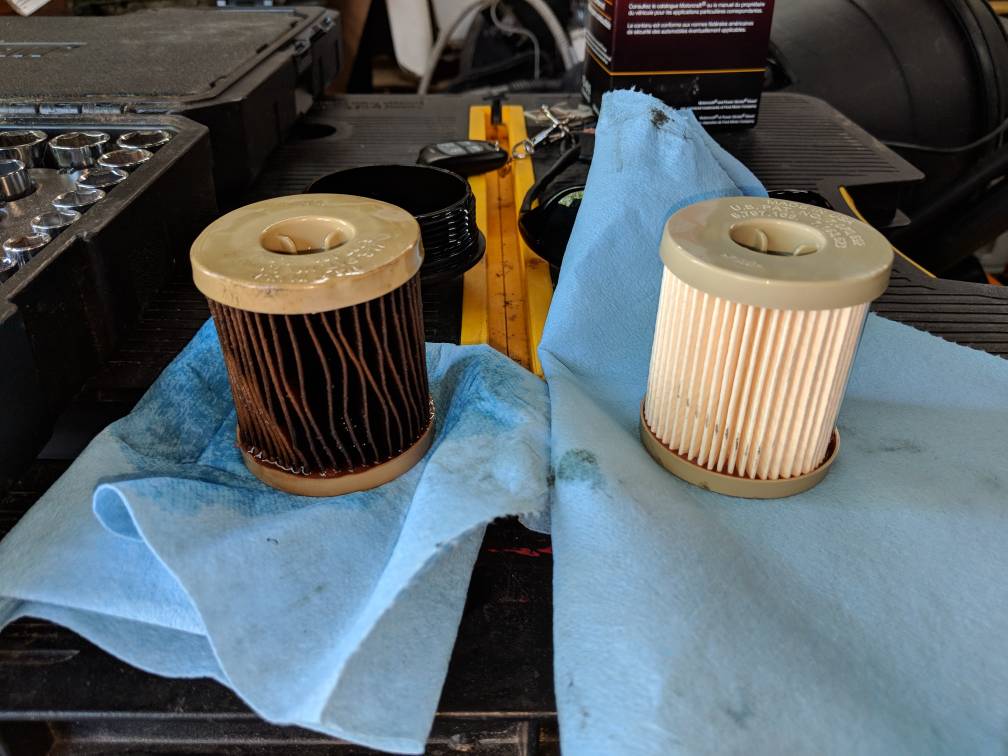
When performing service on a transmission or any major part of the drivetrain, it’s good practice to invest in a high-quality lubricant when you refill, as its inexpensive insurance for your truck’s powertrain. Schaeffer’s has been making lubricants for a long time in the USA, and they’re engineered to last in the most extreme conditions, keeping your parts running cool and protected at the same time. Lastly, break out the grease gun: it’s a forgotten art, but still important to lube all your steering parts with a few pumps of grease each time you change the fuel filters to keep all the moving parts properly lubricated. Not every joint is greaseable, but just about every aftermarket replacement is. Keep an eye out for a grease zerk on the ball joints, tie rods and center link, pitman arm, and of course the drive shaft u-joints, to maximize the life of the wear parts. Also, many people forget about servicing the air filter, but if you have a cold air intake, most kits come with a reusable filter which will last the lifetime of the truck. You can’t use any old cleaner on the air filter, but you should pick up a simple cleaning and re-oiling kit to take the guesswork out of servicing your air filter. You can now sleep easy knowing your old truck is well maintained, but we’re just getting started.
Step Three: Steer it Straight
Excessive play in the steering makes any vehicle miserable to drive and is a very common issue among older trucks. Usually the ball joints are the first to wear out, but your tie rods, center link, track bar, and even control arm bushings are all items which will wear out over time, and the symptoms include sloppy steering and uneven wear on the tires, which sometimes is enough to cause an owner to look at newer vehicles.
While your initial thought might be to visit a discount auto parts website and order some $19 ball joints, that’s not a very good idea. If you combine the amount of labor it takes to replace the steering and suspension items with the fact that budget parts will wear out much quicker than the premium version, it’s easy to understand why it’s so important to install quality parts the first time around. If you’re tackling ball joints in a straight axle Ram for example, the very best option is the Extreme Duty Ball Joint from Carli which will last the lifetime of the truck, regardless of how you drive it. For steering on a Duramax, it’s hard to do better than PPE Stage Three Tie Rods. They’ll hold up to a ton of abuse because they’re so overbuilt, and you can forget about the IFS steering problems usually found when 4wd launching a GM. To replace a sloppy original steering box, a RedHead Remanufactured steering gear will make your old truck drive just like a brand new one: straight and true with no wandering or corrections needed.
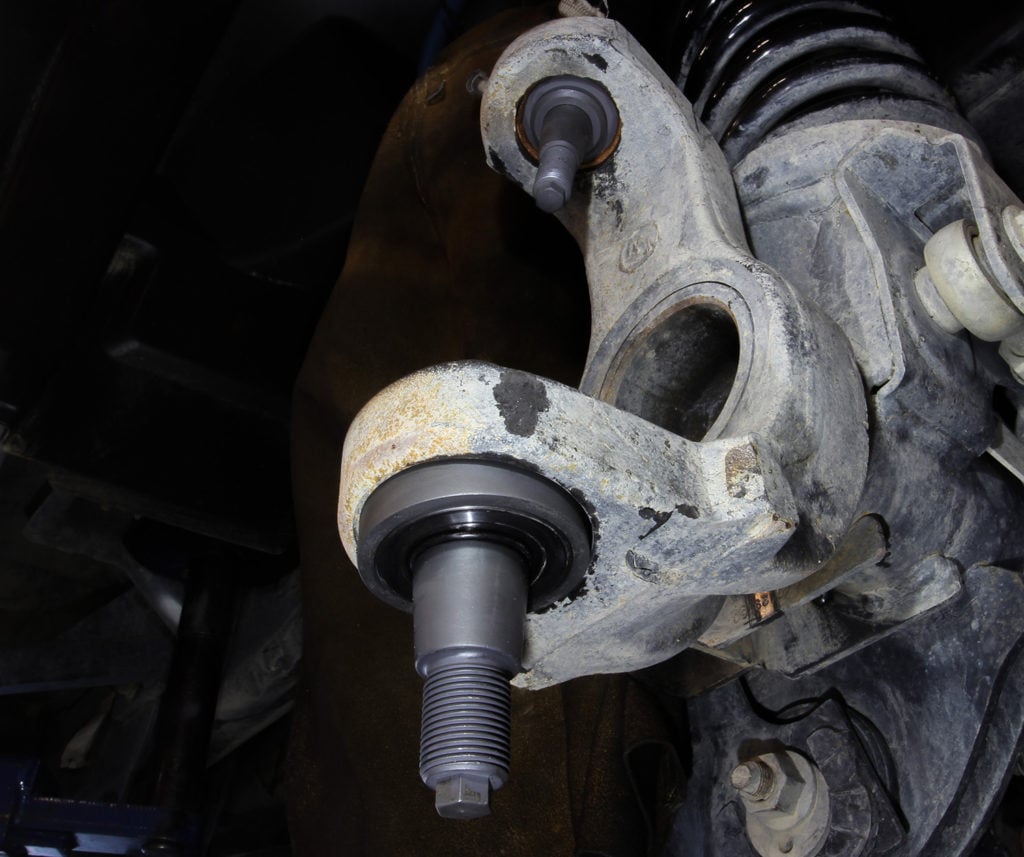
There’s no hiding the fact that premium front end parts are a little more expensive, but the question is how long do you want to own your truck? If you put cheap parts on, just know that you’ll swapping ‘em out again in short order, so you’re basically throwing your money in the garbage, and it will end up costing you more in the long run to do the job a second time. I always live by the mantra “do it once and do it right” when picking out parts, and if the extra cost is a deal breaker, you can always save a few bucks on labor by installing the parts yourself, or having a friend help you out.
Step Four: Rolling Stock
A refreshed steering system will make the ugliest truck a pleasure to drive, but when it comes to looks, the right wheels and tires can make all the difference. Most stock wheels look mediocre at best, and a dated set of aftermarket wheels can ruin the aesthetics of any truck. The good news is, there are more choices for wheels than any other automotive part out there, so you can always find a style that suits your tastes and budget.
If you are building an off-road truck which regularly gets flexed out on the rocks, you’re going to want to go with a 17 or 18” diameter wheel with a 9” width, since it allows for more sidewall which can be aired down so the treads can contour to the terrain for extra grip. A popular choice this year is the Method Race Wheels 305HD, which is a stylish and functional rim that has a weight rating of 4,500lbs for an 8-lug application. My favorite part is the gold/bronze color with the black outer ring, which is perfect for an off-road inspired build, and it will look especially good on a black truck.
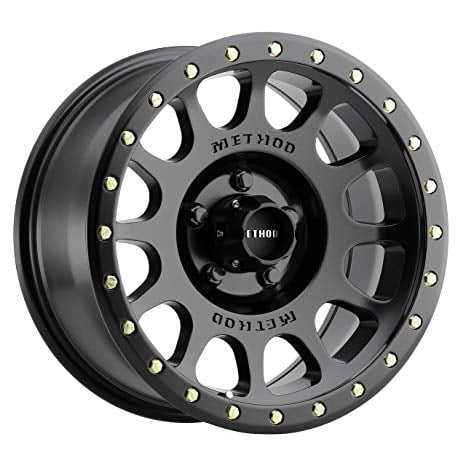
If you’re not so worried about flexing in the rocks but would rather tear it up on the street, a 20 or 22” wheel with a 10-12” width has the style points you’re after, plus there are plenty of “E” and “F” load rated tires available to match the wheel size. The 22×12 Black Rhino Raze comes with a -76mm offset which will give your truck an aggressive stance and will put the outer lip of the wheel just a bit outside your fenders, but isn’t too wide, which would put extra stress on your front-end parts. The gloss black and milled face will look great on any color of truck and the powdercoated finish is much simpler to maintain than a polished wheel. Regardless of which style you prefer, Diesel Power Products has a wheel which will meet your needs, and their experts can help you pick the bolt pattern, width and offset which will work best for your truck, tire size, how much lift you have, and your intended usage. Remember, it’s just like buying new shoes: a fresh pair of kicks can spice things up in a hurry.
Step Five: More Power
For me, the number one thing which makes any truck exciting to drive is more power. If you’re starting with a bone stock truck, there are three upgrades you can do to unlock the hidden potential inside your engine and double the fun factor. First is a cold air intake: it will allow cooler, denser air into the turbocharger with less restriction than the stock ducting, which adds horsepower and throttle response. Most intakes will also come with a serviceable air filter which can be cleaned and reused over and over again, which saves you some money as well. Next, it’s time to get the spent gasses out of the way with a free-flowing exhaust system. Stepping up to a 4” exhaust will get you better mileage and cooler EGT’s, but the side benefit is a more aggressive sound, which is the most important part of the driving experience for a truck guy. With the airflow modifications handled, the real power is unlocked with the help of an Edge Evolution CTS2 programmer. Depending on what type of truck you have, you can gain up to an additional 175hp and 430 pounds of torque simply by re-calibrating the trucks computer, but it also doubles as a gauge monitor to help you keep an eye on your engine’s vitals. Going from stock to tuned will put a smile on anyone’s face, and make your old truck seem brand new again.
The dark side of adding horsepower is after a few months of driving, your fast truck can seem average again once you get used to the added acceleration. Modifying a truck is a slippery slope to start down, and if you already have the basics done but still want something more from your older pickup, it’s time to get your first big-ticket speed part.
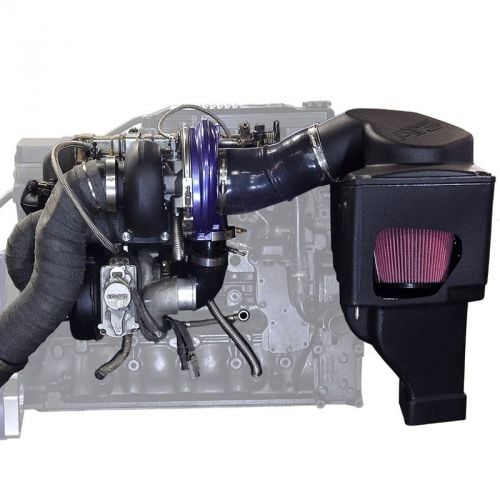
I always recommend upgrading the air handling system before adding more fuel, and my first choice is an add-a-turbo compound kit. If you are running the stock injectors and fuel pump, the factory VGT will retain its lightning quick spool up and exhaust brake capability, but the extra airflow from the larger atmospheric turbo will keep EGTs much lower while towing, and also give a big increase in horsepower which makes getting up to the legal speed limit so much more exciting. The options from there are endless and we’re honestly just scratching the surface, but if you want to learn more about adding different levels of performance to your model of truck, be sure to check out our Adding 300hp series.
It’s an Easy Choice
The vast majority of drivers see their vehicle as an appliance which simply gets them from point A to B, and they have no passion or enjoyment for what they are driving. It’s like a refrigerator: when it gets old and has problems, they simply swap it for the newer version, and continue on with their lives.
For truck enthusiasts, things are different. There can be many reasons why we choose to keep an older diesel in the fleet, but it’s usually because we enjoy it and see the truck as part of the family. Much like that odd uncle who shows up to the family reunion, they might have a few quirks which make ‘em interesting to have around, but a few slight tweaks here and there can transform the truck and make it many times more exciting to drive. Sure, it will take a few dollars in parts and labor, but if you spend your money wisely it will be much more affordable than buying a newer rig, yet it will look and drive better than new with a few key changes. It all comes down to this: if your old truck doesn’t put a smile on your face at least once a day, you need to go shopping for more parts.

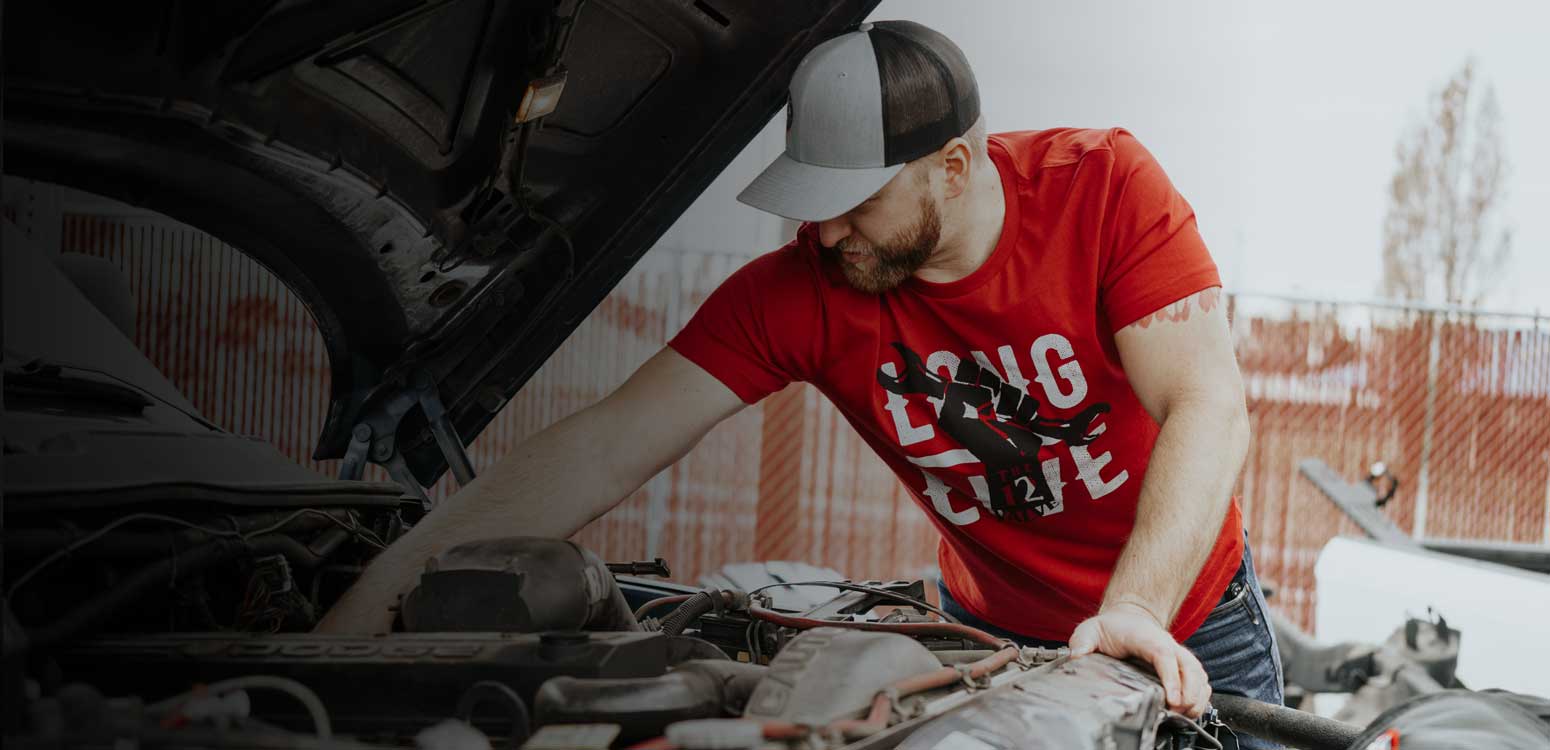
What for so some one can steal it????
For Gen 2 Dodge, Carli ball joints are not available so check out EMF. They are rebuildable without removing them ever again.Thats what I did.
Love this write up! I am legit waffling every single day with my 2011 LML 2500HD and the newer one’s I see coming down the road. Mine just hit 100k on the odometer and I want to keep it going for a long, long time. My biggest enemy here in the Northeast seems to be the rust (I have it above both wheel wells). I may need to find a new bed or mix it up in terms of a flat deck or something. Trying to keep this Silverado mine for a very long time. Thanks again for the write up! Really spoke to me
My gen 3 Ram 2500 just logged 380,000 and still running strong. Did Carli balljoints at 200k replaced them at 335k not impressed. On the 3rd transmission redid interior last year. Steering box is next. Loved your article
I love this wtite up
Love this write up. I own a 2005 f250 4×4 with 6.0 short bed.